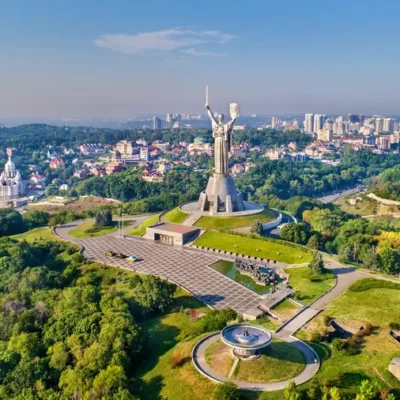Ecology is the scientific study of how living organisms interact with each other and their environment. It’s an incredibly important field of study because it helps us understand the complex relationships between different species and their surroundings. By understanding how ecosystems function, we can make better decisions about how to protect and preserve our natural world.
In this cheat sheet, we’ll cover several key topics in ecology, including abiotic and biotic factors, ecological relationships, energy flow and trophic levels, biogeochemical cycles, ecological succession, ecosystem services, and human impacts on ecosystems. Whether you’re a student studying ecology, a researcher in the field, or just someone interested in learning more about the natural world, this cheat sheet will provide you with a useful overview of these important concepts.
Abiotic vs. Biotic Factors
Abiotic factors are non-living components of an ecosystem, such as water, air, sunlight, and soil. These factors are essential for the survival of organisms in an ecosystem, but they do not have biological origins. Examples of abiotic factors include temperature, humidity, wind, and pH levels.
Biotic factors, on the other hand, are living components of an ecosystem, such as plants, animals, and microorganisms. These factors play a crucial role in shaping the structure and function of an ecosystem. Examples of biotic factors include producers (e.g. plants), consumers (e.g. animals), and decomposers (e.g. bacteria).
In an ecosystem, abiotic and biotic factors interact with each other in complex ways. For example, plants require sunlight, water, and nutrients (abiotic factors) to carry out photosynthesis and produce energy. They also provide a habitat and food source for herbivores (biotic factors) that graze on their leaves and stems. In turn, these herbivores become prey for predators (biotic factors) that hunt them for food. The waste products of these organisms are decomposed by bacteria and fungi (biotic factors) which recycle nutrients back into the soil, making them available for plants to use again.
Understanding the interactions between abiotic and biotic factors is crucial for understanding how ecosystems function and how they can be managed and conserved.
You may like: 10 Heartwarming Ways to Celebrate Mother’s Day
Ecological Relationships
Ecological relationships describe the interactions between organisms within an ecosystem. There are five main types of ecological relationships: mutualism, commensalism, parasitism, predation, and competition.
Mutualism is a relationship where both organisms benefit. An example of mutualism is the relationship between bees and flowers. Bees collect nectar from flowers for food, and in the process, they transfer pollen from flower to flower, helping the plants reproduce.
Commensalism is a relationship where one organism benefits while the other is neither helped nor harmed. An example of commensalism is the relationship between cattle egrets and cattle. The egrets feed on insects that are stirred up by the movement of the cattle, but the cattle are unaffected by the presence of the egrets.
Parasitism is a relationship where one organism (the parasite) benefits at the expense of the other (the host). An example of parasitism is the relationship between tapeworms and their hosts. Tapeworms live in the intestines of their hosts and consume nutrients from their food, which can cause illness or malnutrition in the host.
Predation is a relationship where one organism (the predator) kills and consumes another (the prey) for food. An example of predation is the relationship between wolves and deer. Wolves hunt and kill deer for food, which helps to control the population of deer.
Competition is a relationship where organisms compete for the same resources, such as food, water, or shelter. An example of competition is the relationship between trees in a forest. Trees compete for sunlight, water, and nutrients, which can limit their growth and survival.
These ecological relationships can have a significant impact on populations and communities within an ecosystem. For example, predation can control the population size of prey species and prevent them from overgrazing and damaging their habitat. Competition can limit the resources available to different species, which can result in the exclusion of some species from certain areas or niches. Understanding these relationships is important for managing and conserving ecosystems, as changes in one population or species can have cascading effects on other parts of the ecosystem.
Energy Flow and Trophic Levels
Energy flows through an ecosystem in a one-way path, from the sun (or other external energy source) to autotrophs (producers), then to herbivores (primary consumers), to carnivores (secondary consumers), and eventually to decomposers. Producers capture energy from the sun through photosynthesis and use it to convert carbon dioxide and water into organic compounds. Herbivores consume these organic compounds as food, and carnivores consume herbivores and other carnivores. Decomposers break down dead organisms and waste material, releasing nutrients back into the ecosystem to be used again by producers.
Trophic levels are levels of the food chain based on an organism’s position in the food web. The first trophic level consists of producers, which convert energy from the sun into organic compounds. The second trophic level consists of herbivores, which consume producers. The third trophic level consists of carnivores, which consume herbivores, and so on. Each trophic level has a decreasing amount of energy available compared to the previous level, as some energy is lost as heat or used for respiration and other metabolic processes.
Examples of organisms in each trophic level include:
- Producers: plants, algae, and some bacteria
- Primary consumers: herbivores such as deer, rabbits, and grasshoppers
- Secondary consumers: carnivores such as wolves, snakes, and hawks
- Tertiary consumers: top predators such as lions, eagles, and killer whales
- Decomposers: bacteria, fungi, and some insects such as earthworms and beetles
Understanding energy flow and trophic levels is essential for understanding how ecosystems function and how they can be affected by changes in population sizes or environmental factors. For example, a decrease in the population of a top predator can result in an increase in the population of its prey, which can then lead to a decrease in the population of the prey’s food source (plants or other producers). This can have cascading effects throughout the ecosystem, affecting multiple trophic levels.
Biogeochemical Cycles
Biogeochemical cycles refer to the movement of elements and compounds through living and nonliving components of an ecosystem. These cycles involve processes such as photosynthesis, respiration, decomposition, and weathering.
Some important biogeochemical cycles include:
- The carbon cycle, which involves the movement of carbon through the atmosphere, plants, animals, and the ocean. Human activities such as burning fossil fuels and deforestation have significantly impacted the carbon cycle, leading to an increase in atmospheric carbon dioxide levels and contributing to climate change.
- The nitrogen cycle, which involves the conversion of nitrogen gas into organic compounds and back into nitrogen gas. Human activities such as the use of synthetic fertilizers and the burning of fossil fuels can lead to an increase in nitrogen pollution, which can have negative impacts on water quality and contribute to eutrophication in aquatic ecosystems.
- The phosphorus cycle, which involves the movement of phosphorus through the soil, plants, animals, and water. Human activities such as the use of phosphate fertilizers and runoff from agricultural land can lead to an increase in phosphorus pollution, which can also contribute to eutrophication in aquatic ecosystems.
Human activities such as deforestation, land-use changes, and pollution can have a significant impact on biogeochemical cycles. For example, the clearing of forests can lead to a decrease in the amount of carbon stored in trees and an increase in atmospheric carbon dioxide levels. The use of synthetic fertilizers can lead to an increase in nitrogen and phosphorus pollution in waterways, which can have negative impacts on aquatic ecosystems. Climate change caused by human activities can also impact biogeochemical cycles by altering temperature and precipitation patterns, which can affect the rates of biological and chemical processes that drive these cycles.
Understanding biogeochemical cycles is important for managing and conserving ecosystems, as changes in these cycles can have significant impacts on the functioning of ecosystems and the services they provide to humans, such as clean air and water, food, and timber.
Ecological Succession
Ecological succession is the process of gradual and predictable changes in the composition of species in an ecosystem over time. Succession occurs as a result of both natural and human-induced disturbances, such as wildfires, landslides, and human activities like agriculture and urbanization.
There are two types of ecological succession: primary succession and secondary succession. Primary succession occurs on bare, lifeless substrates such as rocks, sand dunes, or volcanic lava. Pioneer species, such as lichens and mosses, colonize the substrate and begin to break down the rock and create soil. Over time, other plants and animals establish themselves, and the ecosystem becomes more complex and diverse. The process of primary succession can take hundreds or even thousands of years.
Secondary succession occurs on substrates that have been previously inhabited, such as areas that have experienced a disturbance like a wildfire or clear-cutting. In secondary succession, the soil and some of the biotic components of the ecosystem remain intact, which allows for a quicker and more predictable recovery of the ecosystem. Pioneer species in secondary succession include species that are adapted to disturbed environments, such as weeds and fast-growing shrubs. Over time, these species are replaced by more complex communities of plants and animals, until a stable and diverse climax community is reached.
Examples of pioneer species in primary and secondary succession include:
- Primary succession: lichens, mosses, algae, and bacteria
- Secondary succession: fast-growing shrubs such as fireweed, aspen, and blackberry
Examples of climax communities vary depending on the ecosystem, but some examples include mature forests, coral reefs, and grasslands.
Understanding ecological succession is important for understanding how ecosystems respond to disturbances, and how human activities such as deforestation and urbanization can impact the natural succession process. Conservation efforts can help to protect and restore ecosystems, allowing for natural succession to occur and preserving the diversity of plant and animal species within an ecosystem.
Ecosystem Services
Ecosystem services refer to the benefits that humans derive from ecosystems. These benefits can be divided into four main categories: provisioning services, regulating services, supporting services, and cultural services.
Provisioning services include the products that ecosystems provide, such as food, water, and timber. For example, forests provide wood for construction and paper production, and oceans provide fish for food.
Regulating services are the benefits that ecosystems provide in terms of regulating important environmental processes. Examples of regulating services include air and water purification, pollination, and climate regulation. For example, wetlands help to purify water by filtering out pollutants, and forests help to regulate the climate by absorbing carbon dioxide from the atmosphere.
Supporting services are the underlying processes that make all other ecosystem services possible. Examples of supporting services include nutrient cycling, soil formation, and photosynthesis.
Cultural services are the non-material benefits that humans derive from ecosystems, such as recreational opportunities, cultural and spiritual values, and aesthetic values. For example, parks and nature reserves provide opportunities for recreation and relaxation, and traditional cultures often have spiritual and cultural connections to particular ecosystems.
Human activities can impact ecosystem services in a variety of ways. For example, deforestation can lead to soil erosion and decreased water quality, which can impact both provisioning and regulating services. Pollution from agriculture and industry can impact water quality, which can affect both provisioning and cultural services. Climate change caused by human activities can also impact ecosystem services by altering temperature and precipitation patterns, which can affect the rates of biological and chemical processes that drive these services.
Understanding the value of ecosystem services is important for sustainable management and conservation of ecosystems. By recognizing the benefits that ecosystems provide, policymakers and decision-makers can make informed decisions about how to balance human development with the need to protect and preserve natural resources for future generations.
Human Impacts on Ecosystems
Human activities can have significant negative impacts on ecosystems, which can lead to the degradation of ecosystem services and the loss of biodiversity. Some of the major human impacts on ecosystems include:
- Deforestation: Clearing forests for agriculture, logging, and urbanization can lead to the loss of habitat for plant and animal species, soil erosion, and decreased water quality.
- Pollution: Pollution from agriculture, industry, and transportation can lead to the degradation of air and water quality, which can harm both plant and animal species and affect human health.
- Climate change: The emission of greenhouse gases from human activities such as burning fossil fuels and deforestation can lead to global warming, which can cause changes in precipitation patterns, sea level rise, and the loss of habitat for plant and animal species.
These human impacts can have a range of negative effects on ecosystems and their inhabitants. For example:
- Deforestation can lead to the loss of habitat for forest-dwelling species, such as orangutans and tigers. It can also lead to soil erosion, which can harm both terrestrial and aquatic ecosystems.
- Pollution can have a range of negative effects on ecosystems and their inhabitants. For example, nitrogen and phosphorus pollution can lead to harmful algal blooms in lakes and oceans, which can harm fish and other aquatic species. Air pollution can harm plants, reduce agricultural productivity, and contribute to respiratory diseases in humans and animals.
- Climate change can have a range of negative effects on ecosystems and their inhabitants. For example, rising temperatures can cause coral bleaching, which can lead to the death of coral reefs and the loss of habitat for many marine species. Changes in precipitation patterns can lead to droughts and wildfires, which can harm both plant and animal species and affect human communities.
Overall, understanding the negative impacts of human activities on ecosystems is critical for developing sustainable management practices that can help to preserve and protect the natural world for future generations.
Conclusion
In this cheat sheet on ecology, we covered a range of important topics related to understanding the natural world. We started by discussing the difference between abiotic and biotic factors and how they interact in ecosystems. We then explored different ecological relationships, such as mutualism, parasitism, and competition, and how they affect populations and communities. We also discussed energy flow and trophic levels, biogeochemical cycles, ecological succession, ecosystem services, and human impacts on ecosystems.
Understanding ecology is critical for preserving our natural world. By understanding how ecosystems function and the different factors that can impact them, we can develop sustainable management practices that help to protect and conserve the environment. This is especially important in light of the many negative impacts that human activities can have on ecosystems, such as deforestation, pollution, and climate change.
Overall, this cheat sheet provides a useful overview of some of the key concepts and topics in ecology. By taking the time to learn about these important issues, we can all do our part to help protect and preserve the natural world for future generations.





